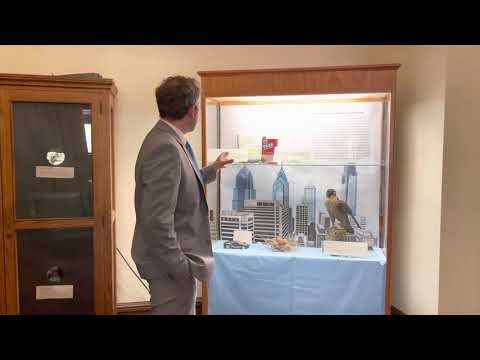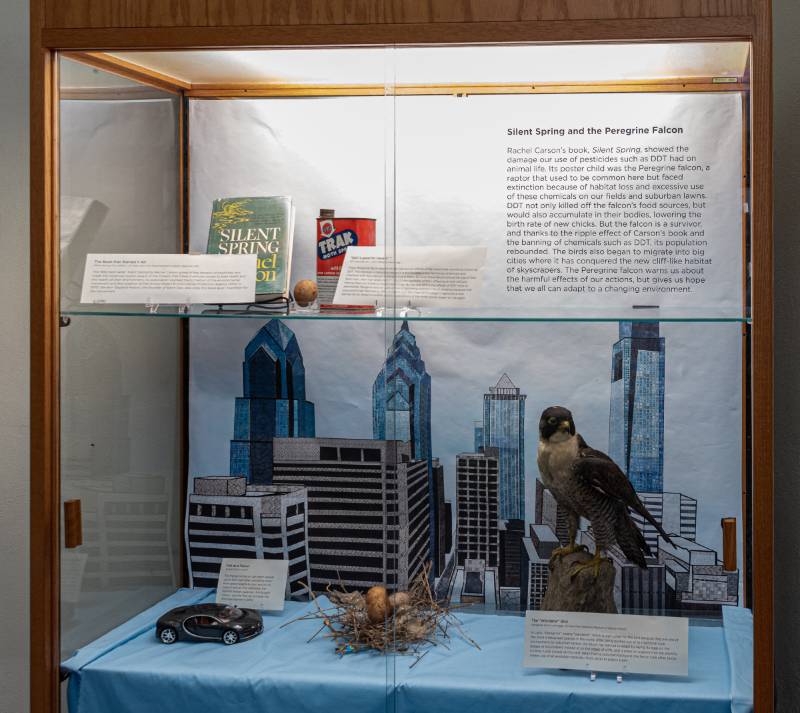Silent Spring and the Peregrine Falcon
Rachel Carson’s book, Silent Spring, showed the damage our use of pesticides such as DDT had on animal life. Its poster child was the Peregrine falcon, a raptor that used to be common here but faced extinction because of habitat loss and excessive use of these chemicals on our fields and suburban lawns. DDT not only killed off the falcon’s food sources, but would also accumulate in their bodies, lowering the birth rate of new chicks. But the falcon is a survivor, and thanks to the ripple effect of Carson’s book and the banning of chemicals such as DDT, its population rebounded. The birds also began to migrate into big cities where it has conquered the new cliff-like habitat of skyscrapers. The Peregrine falcon warns us about the harmful effects of our actions, but gives us hope that we can all adapt to a changing environment.
Curated by Reilley Johnson. “Mosaic City” background image by Piper Johnson. Background designed by Sarah Scarborough. Falcon and eggs on loan from the Delaware Museum of Natural History. First edition Silent Spring on loan from Greensburg-Hempfield (PA) Area Library.




